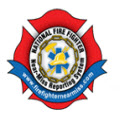National Firefighter Near-Miss Reporting System; Untapped Resource
By Christopher J. Naum, SFPE on Feb 20, 2011 with Comments 0
 Have you heard about the National Firefighter Near-Miss Reporting System (NMRS)? Have you used the NMRS Reports, or submitted a near miss event? Did you know there is a wealth of resources available on the NMRS web site or that there is a Report of the week that is published weekly?
Have you heard about the National Firefighter Near-Miss Reporting System (NMRS)? Have you used the NMRS Reports, or submitted a near miss event? Did you know there is a wealth of resources available on the NMRS web site or that there is a Report of the week that is published weekly?
If not, this is a great opportunity to learn about this national fire service program.
The National Fire Fighter Near-Miss Reporting System is a voluntary, confidential, non-punitive and secure reporting system with the goal of improving fire fighter safety.
Submitted reports will be reviewed by fire service professionals. Identifying descriptions are removed to protect your identity. The report is then posted on this web site for other fire fighters to use as a learning tool.
The reporting system is funded by the U.S. Department of Homeland Security’s Assistance to Firefighters Grant Program. The program was originally funded by DHS and Fireman’s Fund Insurance Company.
 There are three main goals:
There are three main goals:
1. To give firefighters the opportunity to learn from each other through real-life experiences;
2. To help formulate strategies to reduce the frequency of firefighter injuries and fatalities; and
3. To enhance the safety culture of the fire and emergency service.
Fire fighters can use submitted reports as educational tools. Analyzed data will be used to identify trends which can assist in formulating strategies to reduce fire fighter injuries and fatalities. Depending on the urgency, information will be presented to the fire service community via program reports, press releases and e-mail alerts.
Why should I submit a near-miss report? A near miss experienced by a firefighter can improve the knowledge, skills and abilities of everyone who is made aware of it. Reporting your near-miss event to www.firefighternearmiss.com will help prevent an injury or fatality of a firefighter. Near-miss reporting has worked effectively in other industries, especially aviation, since team members have more knowledge. Industries using near-miss reporting systems have lower injury rates and fewer worker fatalities.
-
Near-Miss Reporting Form example, HERE
- NFFNMRS Facebook Page, HERE
- Report of the Week
- ROTW 021711: “I guess it was more than the block could take” 11-073 (Snow Chains)
- ROTW 021011: “That is somebody’s loved one.” 05-435 (Rookies/Probies)
- ROTW 020311: “Board on the side of safety” 10-1279 (Roadway Safety)
- Past Report of the Week Library, HERE
- 2011 Calendar and Annual Report, HERE
 Got a Near-Miss Report to Submit?
Got a Near-Miss Report to Submit?
Click on the button for a direct link to the NFNMRS here
Frequent Questions:
- What is a near-miss event?
- Why should I submit a near-miss report?
- What is the National Fire Fighter Near-Miss Reporting System?
- Who is on the program’s Advisory Board?
- Who is funding/supporting the National Fire Fighter Near-Miss Reporting System?
- How can I contact the National Fire Fighter Near-Miss Reporting System?
- What are the main goals of this reporting system?
- What is going to be done with the information?
- If I elect to give my contact information, how will it be used?
- What kinds of questions are on the report?
- Who can submit a report?
- How do I submit a report?
- How long will it take me to submit a report?
- What types of events should be reported?
- Should I only submit current near-miss events?
- What happens to the report once it is submitted?
- Do I have to give my name when I submit a report?
- Who will have access to read my report?
- How is my identity protected when I submit a report?
- Can I read sample reports?
- Does this system replace any other reporting systems?
- SECTION 1: REPORTER INFORMATION
- SECTION 2: EVENT INFORMATION
- SECTION 3: EVENT DESCRIPTION
- SECTION 4: LESSONS LEARNED
- SECTION 5: CONTACT INFORMATION (OPTIONAL AND CONFIDENTIAL)
 Taking it to the Streets, Blogtalk radio on Firefighternetcast.com (link here)
Taking it to the Streets, Blogtalk radio on Firefighternetcast.com (link here)
Mark your calendars for Wednesday March 16th at 9:00pm ET for a new edition of Taking it to the Streets, where we’ll be discussing the National Near Miss Reporting System and program with Chief Steve Mormino, NMRS Program Advisor past Chief with South Farmingdale (NY) Fire Department and retired Lieutenant , FDNY. Tune in for an exceptional program.
-
Dont’t forget to visit the National Firefighter Near-Miss Reporting System booth at FDIC next month
For more information:
Rynnel Gibbs nearmiss@iafc.org
703-537-4858 www.firefighternearmiss.com
[youtube]http://www.youtube.com/watch?v=_DeGKtU6mqo[/youtube]
Near Miss Reporting System Advisory Board
- Dennis Smith, Chairman, First Responders Financial Co. (Chair of Advisory Board)
- Jim Brinkley, Director of Occupational Health and Safety, International Association of Fire Fighters.
- Alan Brunacini, Fire Chief
- Linda Connell, Director, NASA/Aviation Safety Reporting System
- I. David Daniels, Fire Chief/CEO, Woodinville Fire and Rescue (WA)
- Gordon Graham, Graham Research Consultants
- William Goldfeder, Deputy Chief, Loveland-Symmes Fire Dept. (OH)
- Manuel Gomez, Chief, City of Hobbs Fire Dept. (NM)
- Bill Halmich, Fire Chief, Washington Fire Dept. (MO)
- Christopher Hart, Vice Chair, National Transportation Safety Board
- Mark Light, Executive Director/Chief Executive Officer, International Association of Fire Chiefs
- Ed Mann, State Fire Commissioner, Office of the PA State Fire Commissioner
Take a look at the NMRS Partners, HERE
Filed Under: Adaptive Fireground Management • Most Error-Likely Tactic: MELT • Probability of Adverse Consequences























